
Technical Basis of Radiation Therapy
19,990.00₹ 3,990.00₹
This book is unique in detailing in depth the technological basis of radiation therapy. Compared with the previous edition, all chapters have been rewritten and updated. In addition, new chapters have been included on various topics, including the use of imaging in treatment planning, second malignant neoplasms due to irradiation, and quality assurance in radiation oncology. The book is divided into two sections. The first covers basic concepts in treatment planning and explains the various approaches to radiation therapy. The second part documents the practical clinical applications of these concepts in the treatment of different cancers.
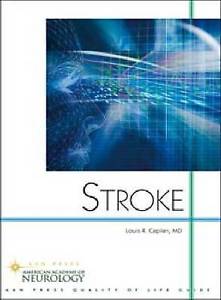
Stroke
1,395.00₹ 1,190.00₹
“There are an estimated 4,800,000 stroke survivors living today and about 700,000 people suffer a new or recurrent stroke each year. Stroke is one of the most common disabling medical conditions, and has wide-ranging economic, social, and psychological effects.
Stroke, the fourth volume in a series sponsored by the American Academy of Neurology, was written for both stroke survivors and individuals wishing to learn more about the condition and how to prevent it. Friends and families of stroke patients will find it a valuable resource packed with important coping tips and management techniques. Nurses, social workers, public health officials, and other caregivers will also benefit from this informative text, which covers:
- The nature of stroke and its causes
- Risk factors and how strokes may be prevented
- Symptoms and how they can be treated
- How stroke survivors are evaluated and diagnosed
- Improving function among stroke survivors through rehabilitation.
- How friends and families of stroke survivors can cope and manage
- The future of stroke and the progress already being made
Written by one of the most respected doctors in the field, Stroke is easily accessible, avoids medical jargon, and focuses not just on the patient but on the community and those close to the survivor. This essential guide will help to ensure that patients are provided with both the medical and personal care they need and will make this most difficult of circumstances a bit easier for all involved.”
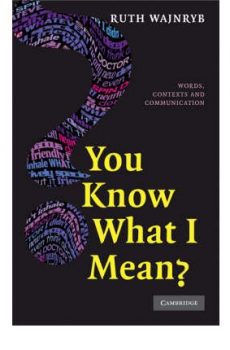
You Know what I Mean?
1,750.00₹ 1,590.00₹
Does a word mean what it says? Sometimes – but not always. Everyone thinks that meaning is contained within words – like sardines in a tin, or milk in a bottle. After all, words are nice stable things that you can look up in a dictionary aren’t they? But dictionaries only take us so far… If you eavesdropped on a teenage conversation, rushing to a dictionary – with its definitions frozen in time – wouldn’t help much. Who’s using a word and to whom, in what context, for what purpose – all these influence the meaning of the language we use. The word’s origins and history (its ‘genetics’) also help. Try teaching yourself another language from a phrasebook and you’ll soon learn that you can be correct, in the formal sense, but still way behind the times in reality. In this book Wajnryb considers these and other questions to explore how and why our language works the way it does.
- Offers a fresh approach to thinking about language
- Includes lots of contemporary references and examples to illustrate points
- Each section is self-contained so readers can browse rather than read from cover to cover

Human tissue in transplantation and research
3,290.00₹ 1,800.00₹
Deficiencies and shortfalls in the supply of human organs for transplantation and human tissue for research generate policy dilemmas across the world and have often given rise to major and deleterious controversies, such as those relating to organ and tissue retention practices following post-mortem examination. They also create an environment in which illegitimate commercial activities flourish. At the same time, patients are denied the therapy they desperately require and researchers are impeded from carrying out vital work into the causes of, and efficacious treatments for, major illnesses and diseases. David Price sets out a clear and integrated legal and policy framework which emanates from the tissue source but protects the interests of donors and relevant professionals through tailored property entitlements, but without presupposing rights to trade in ‘original’ materials.
- Outlines an integrated and coherent donation framework relating to human tissue for the purposes of transplantation and research, which will bring clarity to the policy debates and stimulate reform proposals
- Integrates a ‘property framework’ within the donation model, which will provide better protection for the interests of donors of tissue and professional users
- Weighs the interests of all the parties involved and feeds this in to a policy objective and an appropriate supporting infrastructure linked to consent

The Merchant’s Prologue and Tale
1,295.00₹ 510.00₹
A well-established and respected series. Texts are in the original Middle English, and each has an introduction, detailed notes and a glossary. Selected titles are also available as CD recordings.

The Investor’s Guide to Hedge Funds
2,450.00₹ 995.00₹
“Eldon Mayer is a battle-tested pro. You should listen to what he and his partner, Sam Kirschner, have to say.”
–Barton M. Biggs, Managing Partner, Traxis Partners
Meet the crème de la crème of the new breed of hedge fund managers, learn how they evaluate world financial markets, hear about their winners and losers, and discover how they apply proprietary strategies to stay ahead of the curve. Through broad-scope interviews with 15 highly successful managers, The Investor’s Guide to Hedge Funds provides unparalleled insight into each major hedge fund strategy, its strengths, weaknesses, and performance characteristics. Most importantly, this book shows that despite the sensational headlines, adding hedge funds to a portfolio of stocks and bonds can reduce risk and improve overall performance.

Crisis and Opportunity
1,290.00₹ 990.00₹
With the decline of family farms and rural communities and the rise of corporate farming and the resulting environmental degradation, American agriculture is in crisis. But this crisis offers the opportunity to rethink agriculture in sustainable terms. Here one of the most eloquent and influential proponents of sustainable agriculture explains what this means. These engaging essays describe what sustainable agriculture is, why it began, and how it can succeed. Together they constitute a clear and compelling vision for rebalancing the ecological, economic, and social dimensions of agriculture to meet the needs of the present without compromising the future.
In Crisis and Opportunity, John E. Ikerd outlines the consequences of agricultural industrialization, then details the methods that can restore economic viability, ecological soundness, and social responsibility to our agricultural system and thus ensure sustainable agriculture as the foundation of a sustainable food system and a sustainable society.
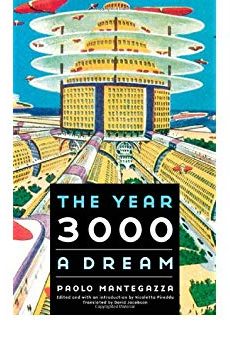
The Year 3000: A Dream
1,300.00₹ 1,090.00₹
First published in 1897, The Year 3000 is the most daring and original work of fiction by the prominent Italian anthropologist Paolo Mantegazza. A futuristic utopian novel, the book follows two young lovers who, as they travel from Rome to the capital of the United Planetary States to celebrate their “mating union,” encounter the marvels of cultural and scientific advances along the way. Intriguing in itself, The Year 3000 is also remarkable for both its vision of the future (predicting an astonishing array of phenomena from airplanes, artificial intelligence, CAT scans, and credit cards to controversies surrounding divorce, abortion, and euthanasia) and the window it opens on fin de siècle Europe.
Published here for the first time in English, this richly annotated edition features an invaluable introductory essay that interprets the intertextual and intercultural connections within and beyond Mantegazza’s work. For its critical contribution to early science fiction and for its insights into the hopes, fears, and clash of values in the Western world of both Mantegazza’s time and our own, this book belongs among the visionary giants of speculative literature.

Coda
980.00₹ 800.00₹
It is to me that we owe our immortality, and this is the story that proves it beyond all doubt.” With this sentence René Belletto begins a novel that compresses every genre he has worked in—thriller, science fiction, experimental literature, horror—into one breathless narrative in which what is at stake is nothing less than our own immortality.
Playing with the expectations of the reader, Belletto constructs a logical puzzle that defies logic, much like the “almost-perpetual motion machine” invented by the narrator of this novel and his father. What sets the story in (perpetual) motion is a package of frozen seafood. This lowly mechanism triggers a series of picaresque and otherworldly events, from the storyteller’s meeting with Fate disguised as a beautiful woman, to the kidnapping of his daughter, to his amorous reunion with the younger half-sister of a high school friend, to the elimination of death from the world. It’s a funny business, but Belletto’s playful and falsely transparent language opens the book to such serious matters as explorations of death, immortality, love, and the innocence of children.

The Skeletal System
6,650.00₹ 4,195.00₹
The thirteen chapters presented in this book summarize our current understanding of the development, biology, and evolution of the vertebrate skeleton. Written by experts in the field, chapters cover everything from the differentiation of chondrocytes, limb and craniofacial patterning, and the origins and evolution of bone to the genetics of human skeletal disease. It is a useful reference for scientists and clinicians wishing to learn how the skeleton is built and works.

Between the Avant-garde and the Everyday
8,400.00₹ 1,990.00₹
The wave of anti-authoritarian political activity associated with the term “1968” can by no means be confined under the rubric of “protest,” understood narrowly in terms of street marches and other reactions to state initiatives. Indeed, the actions generated in response to “1968” frequently involved attempts to elaborate resistance within the realm of culture generally, and in the arts in particular. This blurring of the boundary between art and politics was a characteristic development of the political activism of the postwar period. This volume brings together a group of essays concerned with the multifaceted link between culture and politics, highlighting lesser-known case studies and opening new perspectives on the development of anti-authoritarian politics in Europe from the 1950s to the fall of Communism and beyond.

Storm Watchers
1,720.00₹ 1,190.00₹
A lively, inspiring account of the pioneers who sought toaccurately predict the weather
Benjamin Franklin . . . James P. Espy . . . Cleveland Abbe . . .Carl-Gustaf Rossby . . . Jule G. Charney . . . just a few of theremarkable individuals who struggled against formidable odds tounderstand the atmosphere and predict the weather. Where they sawpatterns and processes, others saw randomness and tumult-and yetthey strove to make their voices heard, often saving lives in theprocess.
Storm Watchers takes you on a fascinating journey through time thatcaptures the evolution of weather forecasting. From the age whenmeteorology was considered one step removed from sorcery to themodern-day wizardry of supercomputers, John Cox introduces you tothe pioneering scientists whose work fulfilled an ancient dream andmade it possible to foretell the future. He tells the little-knownstories of these weathermen, such as Ptolemy’s weather predictionsbased on astrology, John Finley’s breakthrough research inidentifying tornadoes, and Tor Bergeron’s new techniques of weatherforecasting, which contributed to its final worldwideacceptance.
Filled with extraordinary tales of bravery and sacrifice, StormWatchers will make you think twice the next time you turn on thelocal news to catch the weather report.

Researching Food Habits: Methods and Problems
8,400.00₹ 2,290.00₹
The term ‘Anthropology of Food’ has become an accepted abbreviation for the study of anthropological perspectives on food, diet and nutrition, an increasingly important subdivision of anthropology that encompasses a rich variety of perspectives, academic approaches, theories, and methods. Its multi-disciplinary nature adds to its complexity. This is the first publication to offer guidance for researchers working in this diverse and expanding field of anthropology.
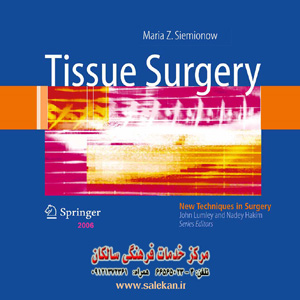
Tissue Surgery
7,995.00₹ 1,900.00₹
Tissue Surgery details the most current and multidisciplinary approaches to new technologies used in general plastic, hand, peripheral nerve, microsurgery, breast, esthetic, and trauma surgery and provides an overview of the most important and clinically relevant plastic surgery research. Many of the techniques and procedures described have not been previously published in either textbooks or journals.
New surgical images of new surgical approaches are all accompanied with anatomical descriptions. In a novel way, the book contains endoscopic images from minimally invasive procedures and provides the most current overview of the leading trends in plastic surgery research. Presenting newly developing clinically relevant techniques and technologies, this book stimulates the reader to look at future advances and applications of research and their relevance to daily clinical practice.

Arthroscopic Rotator Cuff Surgery
10,990.00₹ 1,950.00₹
This text takes a comprehensive approach to rotator cuff disorders, including tears and arthroscopic techniques in surgical management. It addresses the latest topics, such as the conversion of mini-open repair to all arthroscopic repair, and answers key questions raised at instructional courses. Experts in the field present not only arthroscopic shoulder anatomy, cuff tear patterns, repair concepts, and other fundamentals, but also provide coverage of state-of-the-art techniques. The step-by-step approach is supplemented by a wealth of anatomical drawings and color photos.
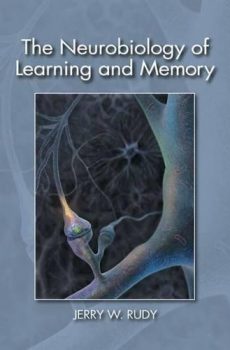
The Neurobiology of Learning and Memory
6,090.00₹ 4,900.00₹
To understand how the brain learns and remembers requires an integration of psychological concepts and behavioral methods with mechanisms of synaptic plasticity systems and systems neuroscience. The Neurobiology of Learning and Memory is a new undergraduate textbook that provides a synthesis of this interdisciplinary field. Each chapter makes the key concepts transparent and accessible to a reader with a minimal background in either neurobiology or psychology and is extensively illustrated with full-color photographs and line art depicting important concepts and experimental data. The first section of the book is organized around the central ideas that synapses are plastic and can be modified by experience and that the synapse is the basic unit of information storage. It introduces students to the long-term potentiation methodology used to study how synapses are modified, the concepts of post-translation processes, genomic signaling processes, local protein synthesis and synaptic tagging, and how they contribute to strengthening synapses. It emphasizes the various ways calcium regulates processes that strengthen synapses and ends with a discussion on the structure of dendritic spines and how changes in the spine s structure contribute to its function and stability. The second section builds on this foundation to show how molecules and cellular processes that have been identified from studies of synaptic plasticity also participate in the making of memories. It features a discussion of the basic conceptual issues researchers face in trying to relate memory to molecules and describes some of the behavioral and neurobiological methods that are used. This section also introduces the concept of memory modulation and discusses the fate of retrieved memories and how they can be modified. The final section of the book is organized around the multiple memory systems view that different neural systems have evolved to store the content contained in our experience. It features discussion of the medial-temporal hippocampal system that supports episodic memory, the concept of systems consolidation, and its relationship to Ribot s law that memories become resistant to disruption as they age. The cortico-striatal system and its relationship to what are called behavioral actions and habits is described, and this section ends with a discussion of neural systems involved in the acquisition and removal of emotional memories.
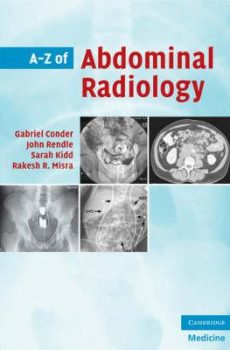
A-Z of Abdominal Radiology
6,790.00₹ 3,350.00₹
A-Z of Abdominal Radiology provides a concise, easily accessible radiological guide to the imaging of the common disorders of the abdomen and pelvis. Organised by A–Z, each entry gives easy access to the key clinical features of the condition. Section 1 reviews the relevant radiological anatomy of the abdomen and pelvis. This is followed by over 80 abdominal disorders, listing characteristics, clinical features, radiological features and relevant clinical management. Each disorder is highly illustrated to aid diagnosis. A–Z of Abdominal Radiology is an invaluable quick reference for the busy clinician and aide memoir for exam revision in both medicine and radiology.
- Introductory section emphasises the relevant abdominal anatomy to assist in diagnosis
- Concise text and numerous illustrations make this the ideal quick reference guide
- Advises which imaging technique to use for each condition

The dream of a broken field
2,095.00₹ 1,495.00₹
The dream of a broken field is to bear crops. The dream of a broken history is to create meaning, to find among the fragments a way to tell the story of a life. It is this dream that Diane Glancy pursues here, through essays on writing, faith, family, teaching, and retirement. Blending a poet’s vision and a storyteller’s voice, the result is at once a virtuoso work of creative nonfiction and an exploration of that genre’s outer limits by one of the foremost voices in Native American literature today.
Uneasily and yet firmly balanced between European and Native cultures—English and German on her mother’s side, Cherokee on her father’s—Glancy continues to search for a language that articulates the Native experience with both the fullness of tradition and the lapses inherent in a broken heritage. Accordingly, The Dream of a Broken Field offers a narrative that pauses and circles, connects and changes direction and travels great distances with grace only to stop sharply for a startling insight. Writing of weekend trips and long journeys, of natural landscapes and burial mounds, of Native American cosmology and a Christian upbringing, of Native American boarding schools and indigenous writers in American universities, Glancy captures the opposing demands of a hurried life and the timeless reflections of a history forever unfolding.





















